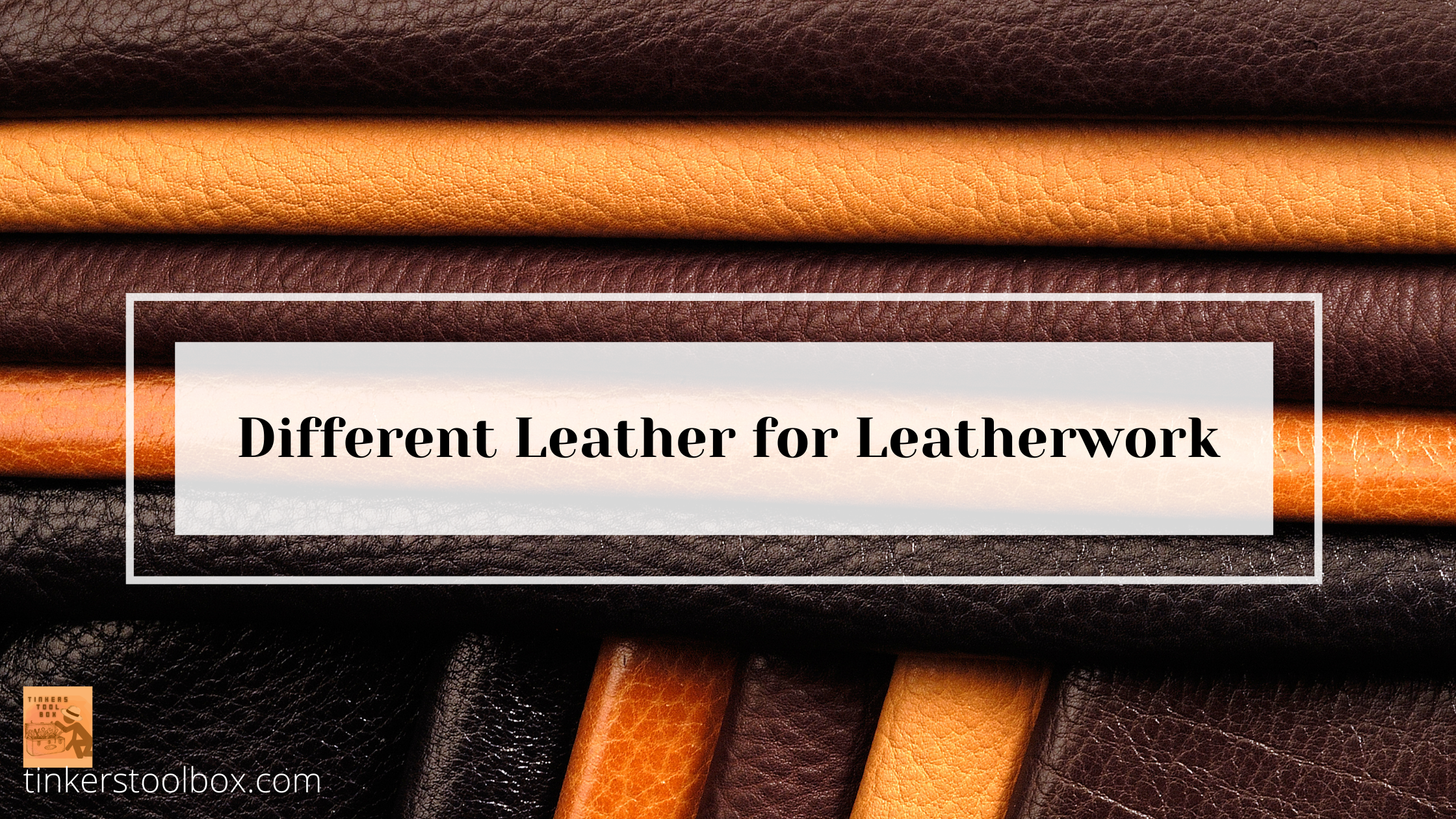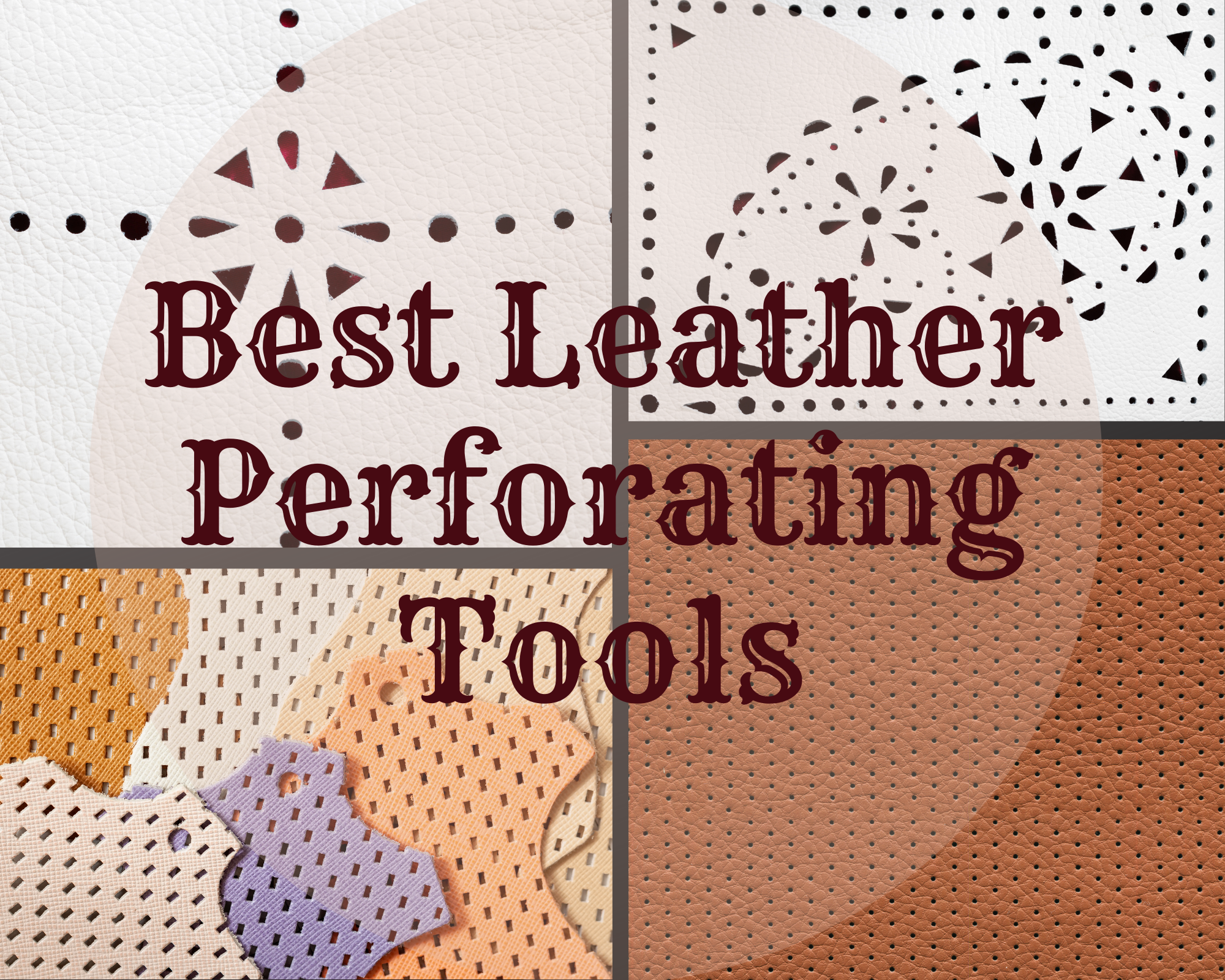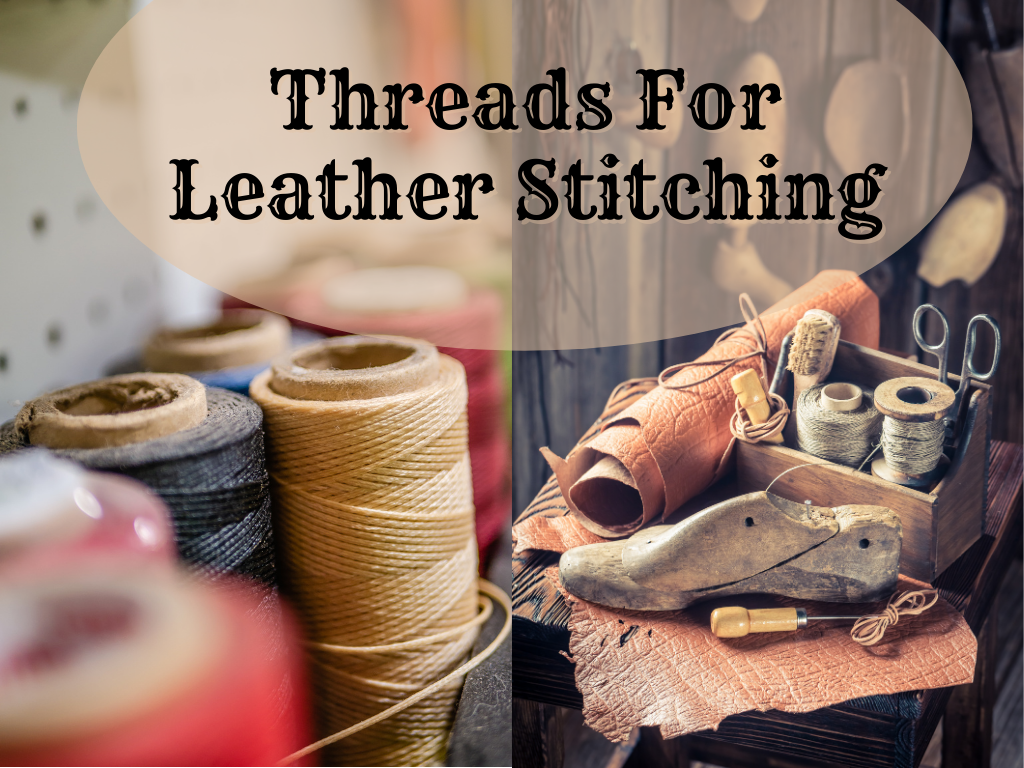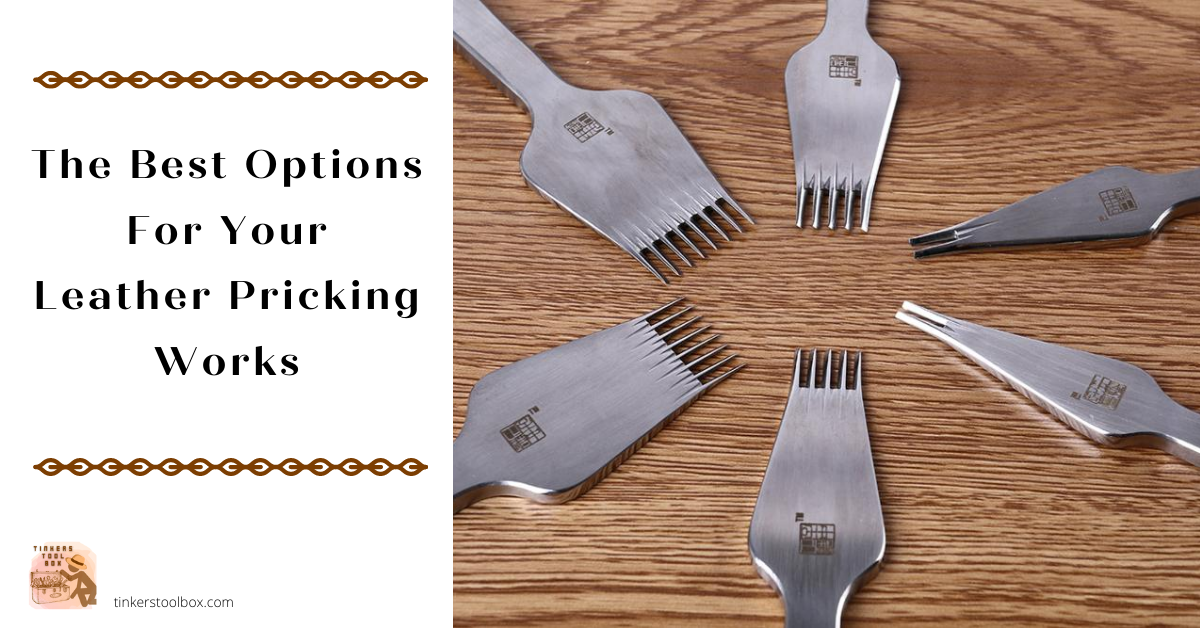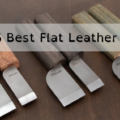Throughout history, leather materials have been used in different products, from shoes to bags to couches. When creating your leatherworking projects, there are a lot of leather materials that you can choose from. Each one of them has its unique qualities that are great for different projects that you may have in mind.
What are the different types of leather? Full-grain, top-grain, split-grain, genuine, vegetable-tanned, bonded, alum-tanned, chamois, and rose-tanned leather are the different types of leather. Each has their unique features and are great for various leatherworking projects that you may have.
It is crucial to choose the best leather material for your projects so that you can get the best result possible. This article will talk about the different types of leather, all about the cowhide, and how you choose the best leather for your projects.
Different Types of Leather

There are plenty of leather materials out there, which generally refer to the volume and layers of the original hide. With this said, this is how it presents the end product of the leather material. The quality and characteristics of the leather material vary on where they come from in the parts of the hide.
Other influences that pertain to the leather quality are the breed of the animal, the climate they lived in, the food they eat, and the amount of exercise they had. Quality is also affected by the meatpacking, tanning, and finishing process during the entire production.
Full Grain Leather: The Most Popular Type of Material
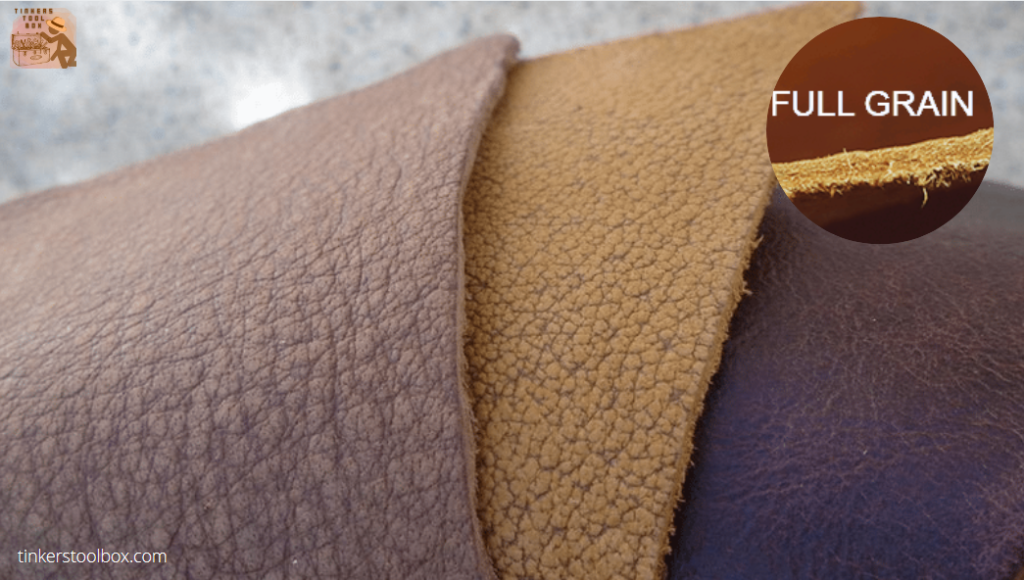
Full-grain leather is usually treated with aniline dyes, soluble, and does not mask the hide’s natural surface. Now, there are some instances where semi-aniline dye is used, which will give the leather a thin protective topcoat that can prevent staining. Full-grain has vertical fibers making it the most robust and most durable part of the cowhide.
The full-grain leather is tight and resistant to moisture. It has a unique appearance, and every single piece tells a story of the animal where it comes from. It becomes more beautiful with age and develops a rich patina as years go by when it comes to full-grain leather. This is the only type of leather that ages this way.
This type of leather is considered to be the best leather that money can buy. The full-grain leather usually has the hair removed, which leaves the natural imperfections of the material. Now, full-grain leather without any blemishes is known to be rare and highly prized in the leather goods world.
Full-grain is usually found in saddlery, footwear, and upholstery. High-end leather producers also use full-grain leather material. This material provides a luxurious feel and a smooth surface, which is another reason why it is highly-priced.
Top Grain Leather: The Most Common Material

Top grain leather is considered the second layer of the hide and goes through an extensive sanding process, buffing, stamping, and dyeing. It is considered to be the second-highest quality when it comes to leather products. Most people prefer to buy this type of leather since it is durable and readily available.
The top grain leather is very similar to the full-grain material, where the only difference is the very top layer is sanded. The top layer is also buffed to remove any imperfections and irregularities in the finish. This process makes the leather softer and more pliable. Different dyes and finishes are applied to the top grain leather as well.
Sanding this type of material makes it more visually appealing but also removes a lot of the strength of the leather. There are also some top-grain materials that are water-repellent, and this is where you get to see the tradeoff between the leather material strength, look, and softness.
Split-Grain Leather Also Known as the Suede
The split-grain leather comes from the lower levels of the top grain area of the hide. This type of leather material is usually a lower layer of the hide, above the flesh, and below the full-grain area, making it the best top grain cuts of the leather. The surface is not dense, tight, and useful as the full grain and top grain leather.
This type of leather material is often used in the finishes of leathers, usually colored, embossed, and the surface is altered in some significant way. When this is done, it allows it to offer some of the helpful qualities of leather material, providing a pleasing visual and often functional surface.
The split-grain leather serves a valuable purpose in leather goods. Its flexibility allows for more coloring and embossing options. It is excellent to use for shoes, purses, sofas and more widely used in shoe manufacturing.
Genuine Leather or the Corrected Leather
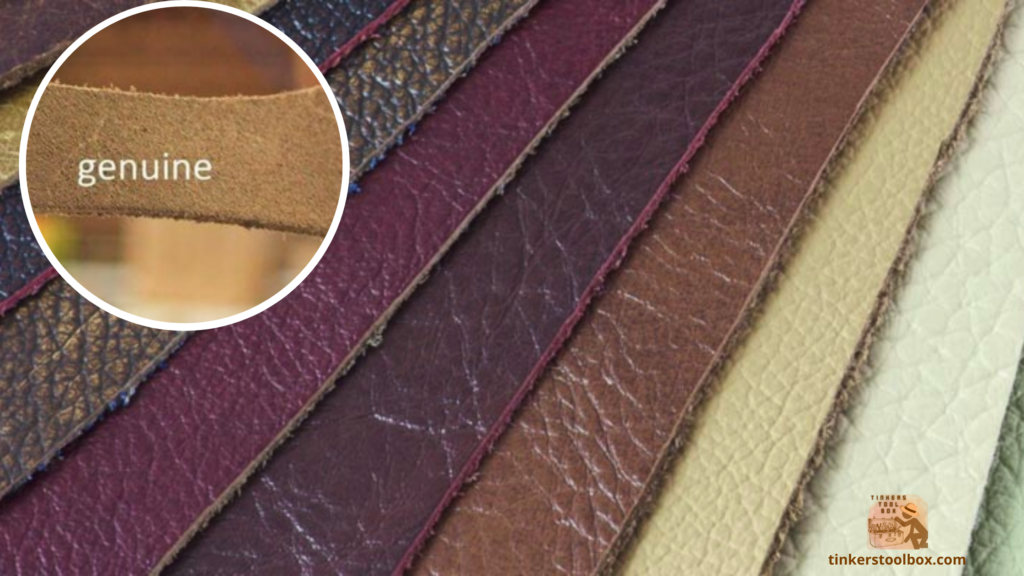
Genuine leather comes from any layer of the hide and goes through different treatments to the surface. When this is done, it will have a more uniform or corrected appearance. These leather materials are usually sanded or buffed to remove any imperfections. When that’s done, it is dyed or spray-painted, then stamped or embossed, giving it a final surface appearance.
Genuine leather may not be the top quality, but it is excellent for leatherworking projects such as belts, clothing, footwear, and other fashion accessories. It is crafted from any side of the hide, and there is no specification of where this material comes from.
Vegetable-Tanned Leather
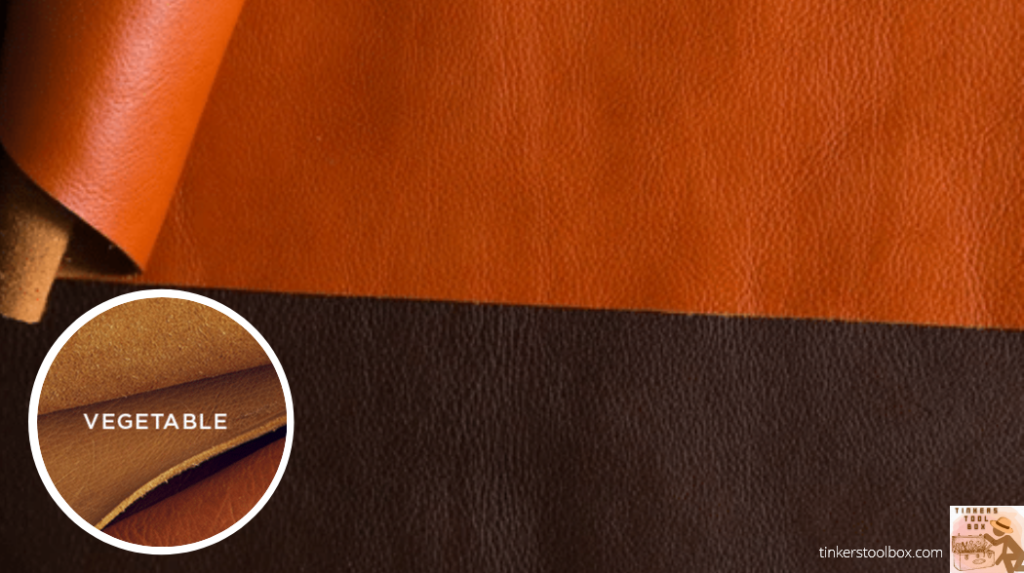
Vegetable-tanned leather is made using tannins and other natural ingredients that are found in vegetables, thus the name. These natural ingredients found in vegetables are bark, wood, leaves, and other fruit added to the tanning process.
It has a typical brown color, but tones will vary depending on the specific ingredient or chemicals that are used during the production. The vegetable-tanned leather is the only type of leather that can be used in carving and stamping projects.
Unlike other types of leather material, the vegetable-tanned leather reacts poorly to water, resulting in permanent damage. Having said this, it is crucial that you keep this type of leather away from all water sources possible.
Bonded Leather: The Reconstituted Leather
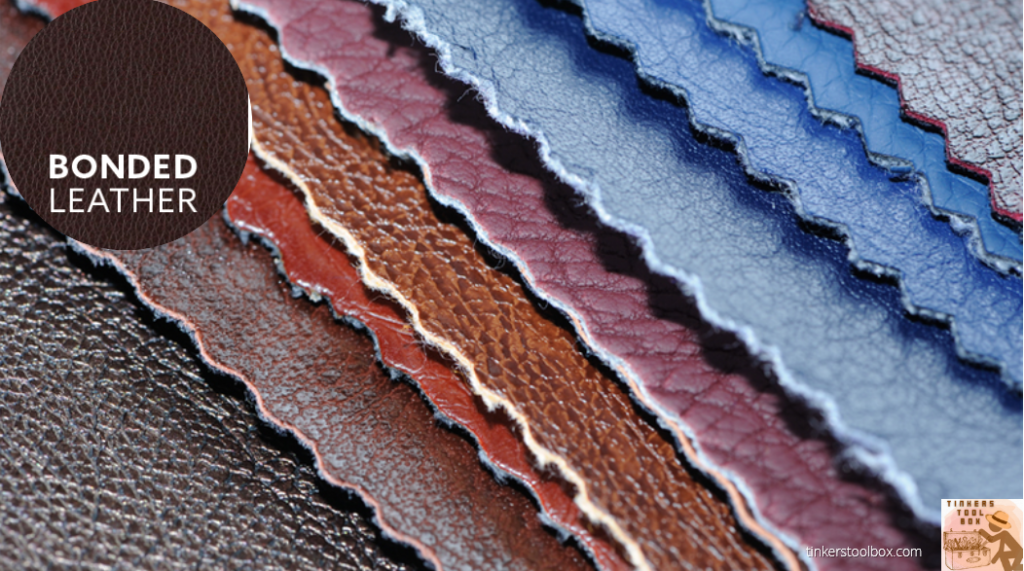
Bonded leather or reconstituted leather is usually leather scraps that are finely shredded as well as bonded together. It usually uses polyurethane or latex and is placed onto fiber mesh or sheet. The amount of leather in the mix can vary from 10 percent to 90 percent.
It is often painted to give a color that can be pressed or embossed. This process provides an appearance of a particular grain or leather style. This type of leather material is usually used as a filter. The amount of leather varies greatly with each bonded leather material that doesn’t have guaranteed quality as with other grades of leather.
The bonded leather material is usually used for couches and other leather furniture.
Alum-Tanned Leather
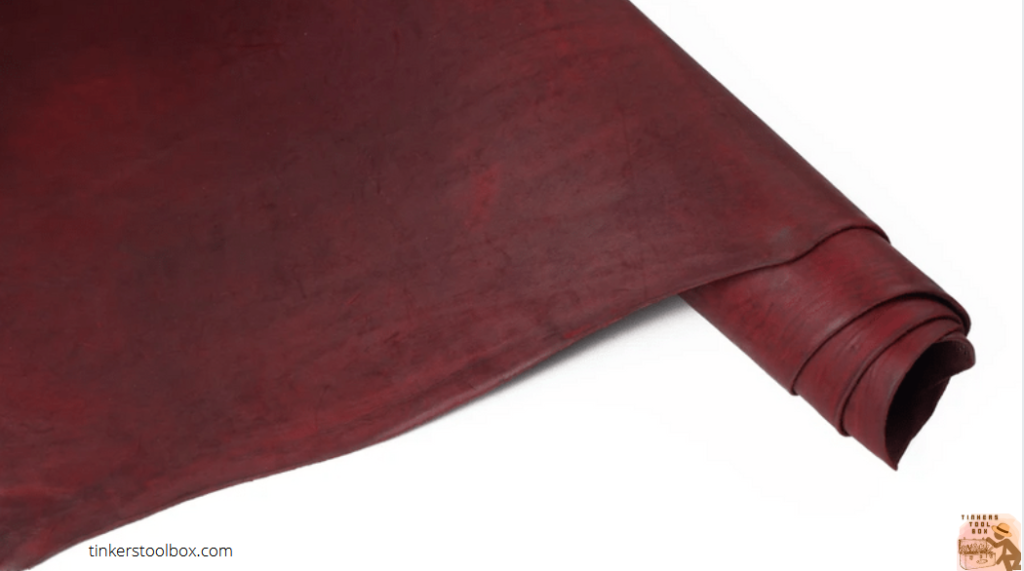
The alum-tanned leather is a material that is made with aluminum salts, glue, and protein. The said protein sources are like flour and eggs. When it comes to alum-tanned leather, the common assumption is the material is tanned.
It is not tanned but soaked in a combination of ingredients that are mentioned above. It results in a stronger and more durable type of leather material.
Chamois Leather
Chamois leather is produced by using fish oils, resulting in leather being more oxidized than other types of materials. This type of leather material has water-absorbent properties, which helps it stand out from other materials.
Other types of leather materials tend to repel water where chamois leather absorbs it, which makes it specifically effective for specific applications.
Rose-Tanned Leather
Lastly, we have rose-tanned leather, which is the most valuable leather. It is produced with rose otto oil instead of vegetables or emulsified oils. It has a distinct and pleasing odor, making it a one-of-a-kind leather material.
When looking for authentic rose-tanned leather, you would have to pay a hefty price since they are extremely rare and difficult to find.
All About the Cowhide
As we all know, the cow is a pretty big animal with a lot of thick skin. A whole cowhide is quite thick, which makes it useful for everyday leather products. It is usually cut down to be thinner and more useful for different purposes, such as turning into leather materials.
Cowhide is made up of two integrated layers, which are corium and grain. Collagen fibers in the corium are thinner and more flexible than the grain. When moving up toward the grain, it becomes tighter and thicker. At this point, the fibers are tightly packed and very sturdy.
The top part of the grain faces outward and toward the hair, which can contain blemishes such as insect bites, stretch marks, scars, and brands. The very top of the grain is usually bugged off to make the leather look more uniformed. At most times, hide is a form of protective barrier that keeps the internal parts of an animal-safe.
The following will talk about the different layers of the leather hide.
The Grain Leather Hide
The grain leather hide is the outermost surface of the hide. It consists of tight, dense fibers that are usually exposed to different elements such as air, rain, sun, etc. This part of the hide is the strongest and smoothest leather after the hair is removed.
The Grain and Corium Mix Leather Hide
The grain and corium mix leather hide is the outer layer of the hide and usually tight. It blends into looser fibers of the corium. The junction is the mix of the very desirable grain layer with the more fibrous and more flexible fibers of the corium layer.
The Corium Leather Hide

The corium leather hide is a layer that is within the animal hides that consists of collagen fibers. It is more loose and open than the grain layer. It is highly useful for producing leather and usually the thickest layer within the animal hide.
The hide is split; parts of the corium leather might be present at the top grain or genuine leather products.
The Flesh Leather Hide
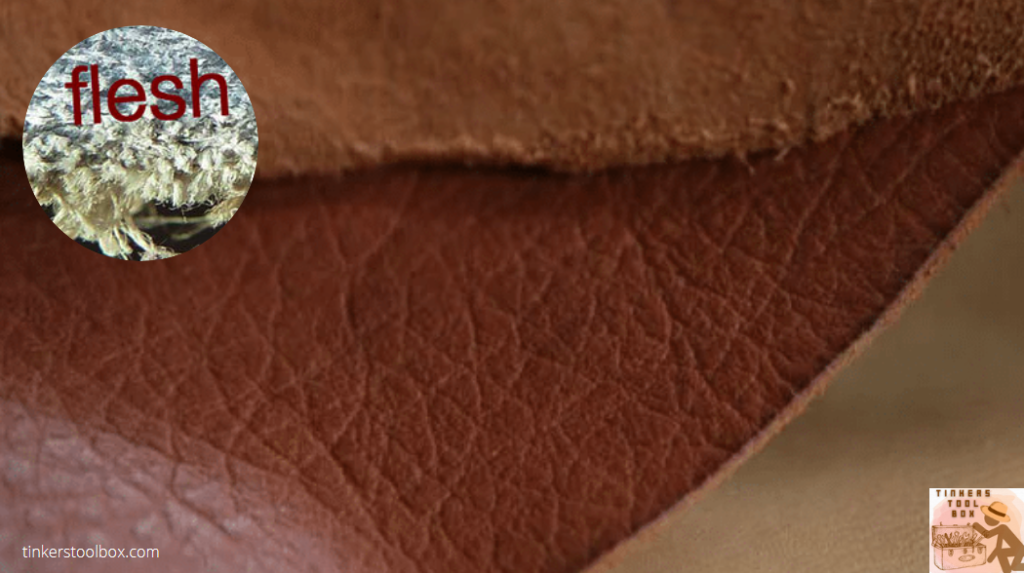
The flesh leather hide is a layer of the hide that consists of muscle and fatty tissues. It is not very valuable when it comes to leather uses. This type of leather hide is usually split to remove the layers above it and yields usable material of different grades and qualities to produce different leather goods.
The primary key to considering the grades and quality of the leather is how it is prepared, cut, and finished.
Determining the Grades of the Leather Material
Once meatpackers produce the rawhides, they are immediately graded. These grades are made to determine the rawhide quality and an excellent way to provide accurate sales to tanneries. During the grading process, inspectors will look for issues such as holes, deep cuts, scars, discoloration, and grain inconsistencies.
The following will talk about the different grades of the leather hide.
Leather Grade Number One
These are considered to be top-grade hides and have no major surface imperfections, holes, or cuts. If holes are present, they are approximately three to four inches from the edge of the hides. These holes can be trimmed away and won’t affect the overall grade.
About 80 percent of these types of hides are shipped to tanners and should be a number one grade.
Leather Grade Number Two
In this grade category, it is allowed to have up to four holes or cuts. These holes should be located in a generally straight line on the hide. It would allow them to be cut around later on and still yield a sizable and usable hide.
The holes should be less than five inches to be considered acceptable within this grade. The grain defects should also be no larger than one foot square in the coverage area. About 15 to 20 percent of the hides shipped to tanners are under the number two grade.
Leather Grade Number Three
The number three grade usually has five or more holes or large cuts within the hide. Just like the number two grade, these holes should be on a straight line. A single cut or hole over six inches are allowed.
You will find grain defects or a series of closely located smaller holes that consist of a surface area larger than one-foot square. With this grade, it should at least yield 50 percent of a usable surface area.
These are only purchased by tanners when they have specifically agreed to purchase the leather grade number three.
Leather Untannable Grade
These are hides that do not meet the quality standards of grades one, two, or three. Leather placed in this category is not shipped to tanners and enters another viable channel for the use of the raw animal hide material. The leather that is put in this category is used outside the leather industry.
Choosing the Best Leather for Your Projects
When you are getting ready to create your leatherworking project, it is crucial for you to know what type of leather material to use. Don’t go out and buy without knowing the material that is best for your desired project. Here are some of the factors that you need to consider when choosing the best leather for your projects.
Check Out the Thickness of the Leather
Checking out the thickness of the leather material is the first thing that you need to look at. Leather thickness is measured by ounces, and knowing the difference between two ounces as well as ten ounces of leather is important. The smaller the ounce is, the thinner the leather would be, the bigger, the thicker.
A perfect example is two-ounce leather that is great for creating gloves or bag lining. For projects like belts, seven ounces to ten ounces is the best thickness to get. For handbags, four or five ounces of leather is thick enough to keep its shape but not so thick that it hardens. You don’t want to get thick leather because it can be difficult to stitch through the leather.
The Firmness and Softness of Leather
The firmness of the leather is also known as the hand of the leather. It refers to how soft or firm the leather is to the hand. The vegetable-tanned leather usually has a fuller body and firmer feel than the chrome-tanned and oil-tanned material.
Chrome tanned leather has a softer hand and more pliable. It comes in handy for projects that need stitching on the inside. You will be able to turn it right side out after the stitching process. With this said, chrome-tanned leather is more accessible than using vegetable-tanned leather.
Conclusion
With different types of leather available in the market, each one is suitable for different leatherworking projects that you may have in mind. Knowing what to look for in leather is crucial especially when you want the best result possible for your projects. Different factors such as where the grade is from and the grade of the leather are something that you should take note of when purchasing your leather. Happy leather hunting!
